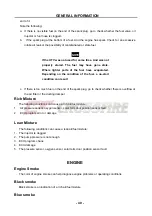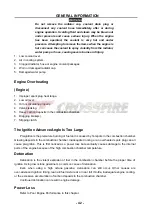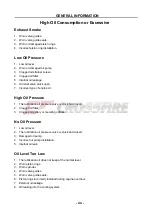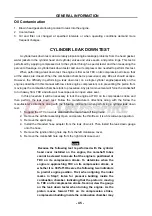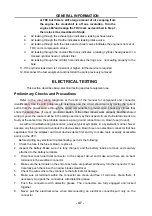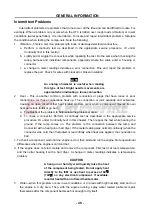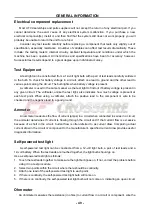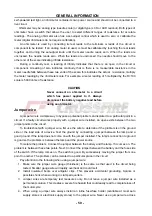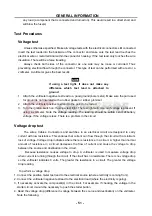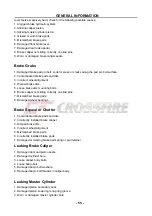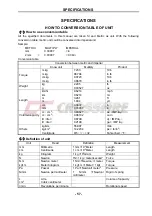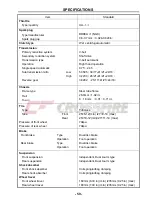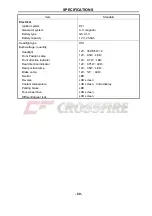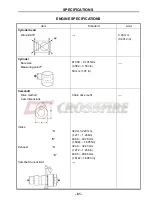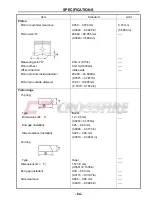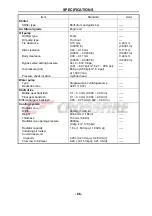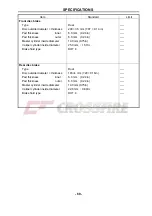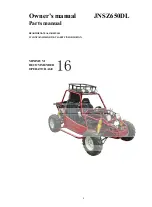
GENERAL INFORMATION
- 54 -
the master cylinder reservoir drops. Whenever
adding brake fluid to the reservoir, visually check
the brake pads for wear. If it does not appear that
there is an increase in pad wear, check the brake
hoses, lines and banjo bolts for leaks.
3. Leak in the brake system.
4. Contaminated brake fluid.
5. Plugged brake fluid passages.
6. Damaged brake lever or pedal assembly.
7. Worn or damaged brake pads.
8. Warped brake disc.
9. Contaminated brake pads and disc.
WARNING
A leaking fork seal can allow oil to
contaminate the brake pads and disc.
10. Worn or damaged master cylinder cups and/or cylinder bore.
11. Worn or damaged brake caliper piston seals.
12. Contaminated master cylinder assembly.
13. Contaminated brake caliper assembly.
14. Brake caliper not sliding correctly on slide pins.
15. Sticking master cylinder piston assembly.
16. Sticking brake caliper pistons.
Brake Drag
When the brakes drag, the brake pads are not capable of moving away from the brake disc when the
brake lever or pedal is released. Any of the following causes, if they occur, would prevent correct brake
pad movement and cause brake drag.
1. Warped or damaged brake disc.
2. Brake caliper not sliding correctly on slide pins.
3. Sticking or damaged brake caliper pistons.
4. Contaminated brake pads and disc.
5. Plugged master cylinder port.
6. Contaminated brake fluid and hydraulic passages.
7. Restricted brake hose joint.
8. Loose brake disc mounting bolts.
9. Damaged or misaligned wheel.
10. Incorrect wheel alignment.
11. Incorrectly installed brake caliper.
12. Damaged front or rear wheel.
Hard Brake Lever or Pedal Operation
When applying the brakes and there is sufficient brake performance but the
operation of brake

